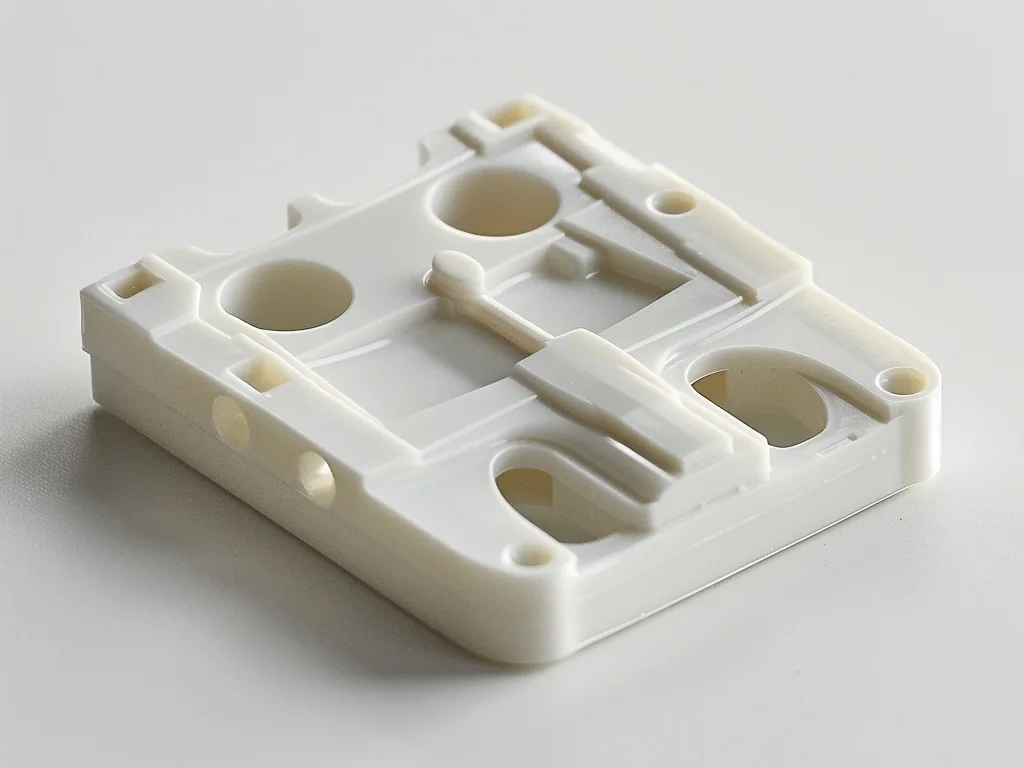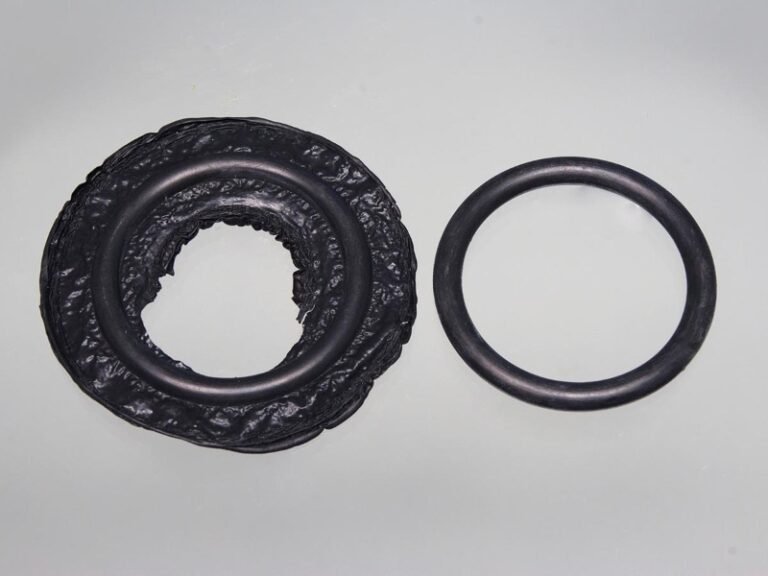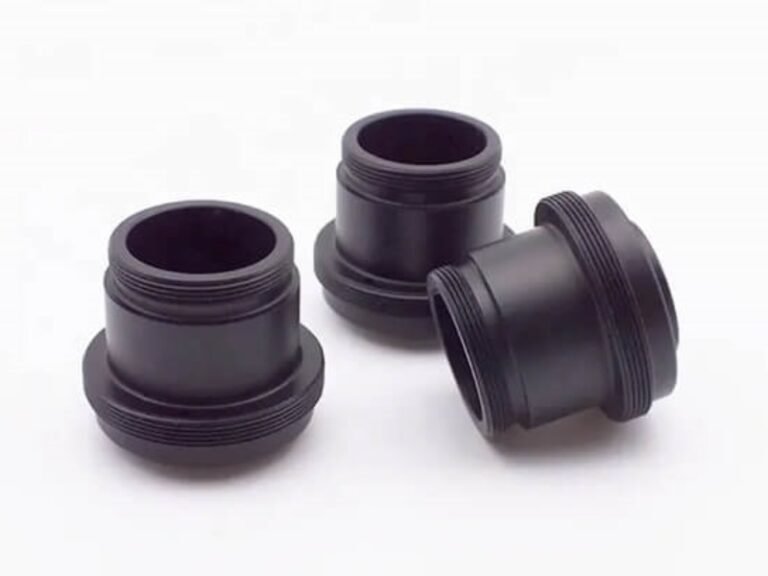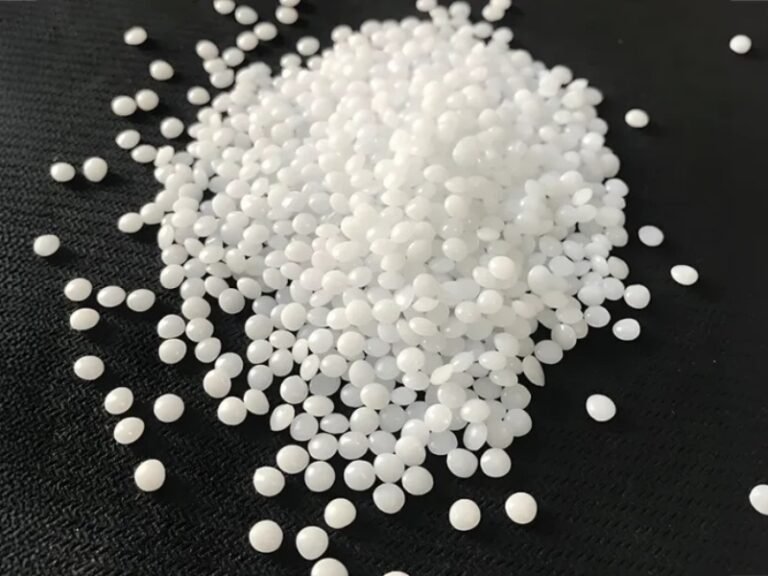Machining polypropylene (PP) is a cost-effective and versatile solution for producing high-quality components across industries. In this article, we will explore the PP mateiral properties and CNC machining process
What is Polypropylene (PP)?
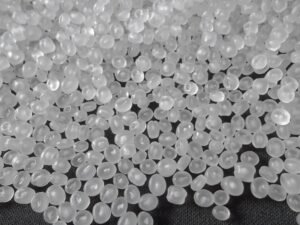
Polypropylene, often referred to as PP, is a thermoplastic polymer of the polyolefin. This PP material is known for its balance of strength, flexibility, and chemical inertness. With a density of approximately 0.898–0.908 g/cm³, PP is one of the lightest plastics. Its exceptional resistance to acids, bases, solvents, and moisture, coupled with a high heat deflection temperature.
PP exists in two primary forms: homopolymer and copolymer. Homopolymer offers superior stiffness and strength. Copolymer provides enhanced impact resistance, particularly at low temperatures.
Advantages of Machining Polypropylene
Machining polypropylene offers numerous benefits, making it a top choice for manufacturers seeking efficiency and versatility:
Ease of Machining: PP’s semi-crystalline structure allows for smooth cutting, enabling CNC polypropylene processes to achieve tight tolerances with minimal tool wear.
Cost-Effectiveness: The low material cost of PP, combined with its machinability, reduces production expenses, making it ideal for both prototyping and high-volume manufacturing of machined plastic parts.
Chemical Resistance: PP withstands corrosive substances, ensuring longevity in applications like chemical containers and piping systems.
Lightweight Material: Among commodity plastics, polypropylene boasts one of the lowest densities, contributing to significant weight savings in final components.
Sterilizability: PP’s ability to endure repeated autoclaving makes it a staple for medical components like syringes and surgical trays.
Good Dimensional Stability: Machining PP can achieve tight tolerances due to its semi-crystalline nature, useful in applications requiring precision.

PP CNC Machining Service
Step-by-Step Workflow for CNC Polypropylene Machining
The CNC PP machining process requires careful planning and execution to achieve optimal results. Below is a detailed workflow for machining polypropylene:
Material Selection and Preparation
Choose the appropriate PP grade (homopolymer or copolymer) based on application requirements. Pre-cut the raw sheet or rod stock to manageable sizes for CNC setup.
Machine Setup
Configure CNC mills or lathes with robust fixturing to secure PP workpieces.
Tool Selection
Opt for sharp, high-speed steel (HSS) or carbide tools with polished edges to minimize burrs and ensure clean cuts in CNC PP operations.
Rough Cutting
Use initial cutting processes to bring the material close to the desired size and shape. This step removes excess material without focusing on precision.
CNC Machining
Program the CNC machine with the final design specifications. Optimize settings for spindle speed, feed rate, and depth of cut.
Chip Evacuation and Cooling
Employ air blasts, mist coolants, or water-soluble coolants to clear stringy chips and maintain optimal temperature at the cutting zone, preventing thermal deformation.
Post-Machining Finishing
Deburr edges using manual or automated methods and inspect parts for dimensional accuracy and surface finish to ensure high-quality CNC polypropylene components.
Common Challenges in Machining Polypropylene and Solutions
While machining polypropylene is generally straightforward, certain challenges can arise. Understanding these issues and their solutions is critical for successful CNC PP fabrication:
Heat Sensitivity and Warping
Polypropylene has a relatively low melting point. Excessive heat generated during cutting can melt or deform the material.
Solution: optimize cutting speeds and depths, apply coolants, and use intermittent cutting to allow the material to cool.
Stringy Chip Formation
PP tends to produce long, stringy chips that can wrap around tools or workpieces, complicating chip evacuation.
Solution: use sharp tools with polished flutes and implement effective chip clearance strategies such as air blowers or coolant flow.
Workpiece Flexibility and Vibration
PP is less rigid compared to metals, which can cause vibrations and deflections during machining, leading to poor surface finish or dimensional inaccuracies.
Solution: design custom clamps and fixtures that hold the part securely without distortion. Use softer jaw materials or distributed clamping pressure.
Material Softness
PP’s relatively soft nature can result in burrs or rough surface finishes.
Solution: Employ sharp tools with high cutting speeds and light feed rates to achieve smoother surfaces in PP CNC machining.
Contamination Risk
In mixed-material shops, metal residues can contaminate PP parts, potentially causing cracks over time.
Solution: Utilize dedicated polymer machining facilities to ensure contamination-free CNC PP production.
Tools and Machines for Polypropylene Machining
Choosing the Right CNC Machine for PP
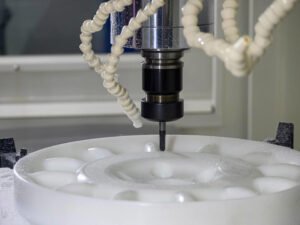
Selecting the appropriate CNC machine is paramount for effective machining polypropylene. CNC mills and lathes with high spindle speeds and stable fixturing systems are ideal for CNC PP applications. Three-axis or five-axis CNC mills offer versatility for complex geometries, while precision lathes excel in producing cylindrical components. Machines should feature robust beds to minimize vibrations and support coolant systems to manage heat, ensuring dimensional accuracy and surface finishes in CNC polypropylene parts.
Basic Cutting Tools for PP Machining
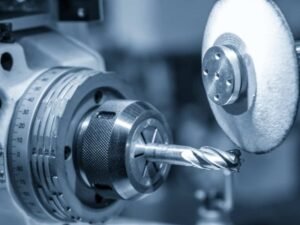
For PP CNC machining, sharp, high-speed steel (HSS) or carbide tools are recommended due to their durability and ability to produce clean cuts. Single-point tools for turning or end mills for milling should have polished edges to reduce friction and prevent material buildup. Recommended Parameters: Spindle speeds of 8,000–12,000 RPM and feed rates of 0.05–0.15 mm/rev provide an optimal balance between efficiency and surface quality. For intricate features, micro-grain carbide tools are preferred for their precision and longevity in machining polypropylene.
Applications of Machining Polypropylene
CNC polypropylene machining supports a wide range of industries due to PP’s versatile properties:
- Medical Sector: Disposable syringes, instrument trays, diagnostic device parts, fluid delivery system components.
- Automotive Industry: Interior trim, fluid containers, and protective covers.
- Consumer Goods: Household items, containers, and packaging components.
- Industrial Equipment: Chemical tanks, pipe fittings, and electrical insulator components.
Partner Zhongde for CNC PP Machining
Although there are many challenges during the machining process, partner with experience manufacturer will solve the problem. Zhongde offers expert CNC PP machining services with advanced CNC mills and lathes, providing reliable custom cnc service that ensures tight tolerances and smooth surface finishes for PP components. Welcome to contact Zhongde and get custom PP CNC machining solutions.
FAQs
CNC machining PP (polypropylene) differs from other plastics because PP is softer and more flexible, making it easier to machine but prone to melting or deforming if not cooled properly, while other plastics like ABS or PC may be harder, more brittle, or require different cutting speeds and tools due to varying strength and thermal properties.
Machining polypropylene involves cutting the material into shape, allowing for small production runs and custom parts with tight tolerances. Injection molding melts and injects PP into molds, suitable for high-volume production but less flexible for quick design changes.
Yes, CNC machining polypropylene is cost-effective for low to medium volume productions, prototyping, and custom parts because it avoids mold costs and allows quick changes in design.
